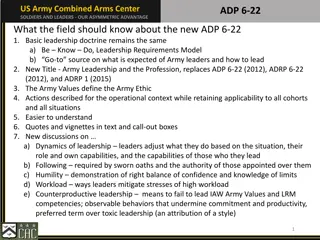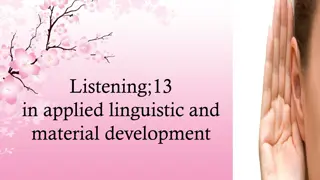Enhancing Communication Skills Through Effective Listening and Leadership
Discover the art of effective listening, a crucial skill for building relationships, developing teams, and finding solutions. Dive into the concepts of active and empathetic listening, and explore how listening can transform adversarial situations into positive outcomes. Uncover the principles of servant leadership and the importance of leading and teaching edges in guiding and facilitating teams through growth and learning. Access valuable resources for training and further information to enhance your communication skills and become a more effective leader.
Download Presentation

Please find below an Image/Link to download the presentation.
The content on the website is provided AS IS for your information and personal use only. It may not be sold, licensed, or shared on other websites without obtaining consent from the author.If you encounter any issues during the download, it is possible that the publisher has removed the file from their server.
You are allowed to download the files provided on this website for personal or commercial use, subject to the condition that they are used lawfully. All files are the property of their respective owners.
The content on the website is provided AS IS for your information and personal use only. It may not be sold, licensed, or shared on other websites without obtaining consent from the author.
E N D
Presentation Transcript
Effective Listening Seek first to understand, then to be understood. Stephen Covey
Two Parts of Effective Listening Active reflects what a person is saying to confirm comprehension and Empathetic a sincere attempt by a listener to understand in depth what a speaker is saying.
Listening in Adversarial Situations Listeners should always strive to create a positive present as opposed to a negative past.
Effective Listening You can give caring feedback without a good technique, but the slickest technique in the world will not hide a lack of caring.
Effective Listening: Summary Effective Listening is a skill we can learn Plays a role in forming relationships, developing teams and finding solutions The best Listening is both Active and Empathetic Listening can be a tool for turning a negative situation into a positive
Servant Leadership The most effective Leaders put those whom the lead first (others-first leadership) Good Leaders see themselves as serving those they lead, enabling their success
The Leading Edge Describes the behavior of a leader as the team moves through the stages of development
The Teaching Edge Describes the behavior of an instructor as a learner goes through the stages of learning a skill
For Training Resources and More Information Visit: http://training.oa-bsa.org/noac2015























